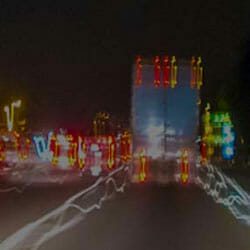
NHTSA Launches Efforts to Reduce Drowsy Driving
- April 27
- Evans/Reilley
- Car Accidents
In March, the National Highway Transportation Safety Administration released its Drowsy Driving Research and Program Plan, which outlines several initiatives intended to address the problem of drowsy driving.
Drowsiness is estimated to be a factor in 2 to 20 percent of annual traffic fatalities and about 72,000 crashes per year. But the actual number of drowsy-driving crashes and fatalities may be higher, because at present there’s no standardized method police departments use to identify drowsy drivers and cite drowsiness in their crash reports. The NHTSA aims to develop such standards, to better understand the impact of drowsiness, and to educate the public about the dangers of drowsy driving.
How Tiredness Affects People
Busy people sometimes skimp on sleep in order to get more done. But over time, the effects of too little sleep can interfere with one’s ability to function. The National Sleep Foundation calls this habitual pattern of inadequate sleep “sleep debt.” People with sleep debt are more prone to making mistakes when driving and will have a slower reaction time than people who get adequate rest.
People need less sleep as they grow older: a newborn needs at least 11 hours of sleep, whereas a person older than 65 can function on as little as five hours of sleep. For adults aged 18 to 64, the ideal amount of sleep is seven to nine hours, with six hours being the minimum. Yet some people in this age range will stubbornly insist they need only five hours of sleep to function, as long as they have coffee.
Caffeine can help sharpen alertness, but it’s no substitute for sleep.
Drowsy Driving Crashes
In a recent poll, about 37 percent of drivers admitted to falling asleep while driving in the past year. Sometimes, drivers may be unaware they’ve actually fallen asleep – they may feel they “zoned out” for a moment, when in fact their brain entered a stage known as microsleep.
Microsleep is when an overtired brain attempts to recharge itself by shutting down momentarily. And when driving, that brief episode is enough time for a car to leave the roadway or veer into another lane.
People who spend a lot of time driving are at heightened risk of nodding off behind the wheel, and that’s why there are laws that prohibit commercial truck drivers from exceeding a certain number of driving hours. Nonetheless, drowsiness is cited as a factor in many fatal truck crashes every year. In the unfortunate event of a truck accident, it’s essential to seek legal guidance from an experienced Austin truck accident lawyer to protect your rights and pursue the compensation you deserve.
Other groups at higher risk of drowsy driving include shift workers, male drivers aged 17-23, people with sleep disorders and people who sleep less than six hours a night.
Public Awareness, Public Policy
The NHTSA is actively working on developing and finalizing content for public awareness campaigns about drowsy driving and plans to have material ready for states to use by mid-summer. Because many people may not recognize their own sleep deprivation, raising awareness of the problem is an important step in reducing drowsy driving crashes.
Another of the NHTSA’s initiatives involves working with the Federal Highway Administration to encourage state-level administrators to add roadside rumble strips, which have been shown to reduce lane departure crashes by 50 percent or more, depending on the location.

 Serving Clients Throughout Texas
Serving Clients Throughout Texas
 Chip Evans is a partner at Evans & Herlihy. Chip brings to the firm more than 20 years of experience as a trial lawyer representing Plaintiffs. It is the desire to help individuals, not corporations, that attracts Chip to this side of the docket. [
Chip Evans is a partner at Evans & Herlihy. Chip brings to the firm more than 20 years of experience as a trial lawyer representing Plaintiffs. It is the desire to help individuals, not corporations, that attracts Chip to this side of the docket. [